Molise: Italy’s least-visited region a great birthday present
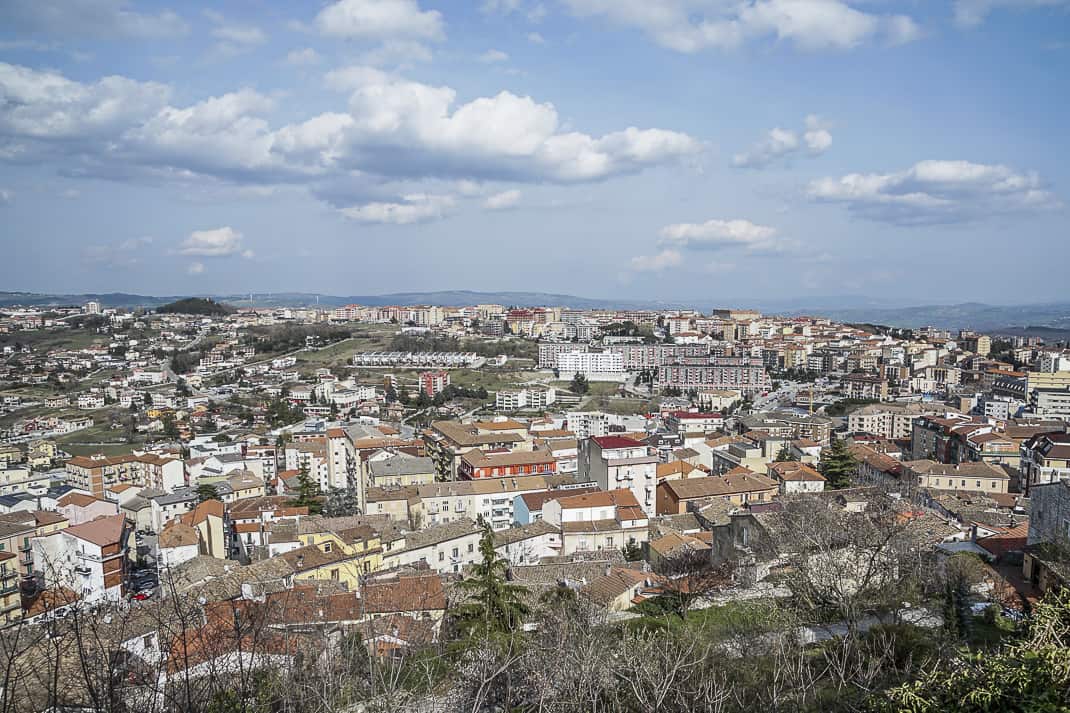
(This is the first of a two-part blog on Molise, Italy’s least-visited region.)
CAMPOBASSO, Italy – I always say that every time you visit a place, it’s like peeling back a layer of an onion. Every visit reveals a new side of a country, a town, a restaurant. I’ve lived in Italy for more than eight years. I’ve peeled back so many layers of onion, they are scattered all over my life. I’m running out of layers to peel.
Which is why I visited Molise.
It’s arguably the least-known of Italy’s 20 regions. It’s definitely the least visited. Italy’s second smallest region is only 1,714 square miles (4,438 square kilometers), just slightly bigger than Rhode Island. It sits on the Adriatic Sea with only 22 miles of coastline, squeezed like a grape between Puglia, Campania, Lazio and Abruzzo.

Molise (pronounced (mo-LEES-ay) is the quiet, forgotten cousin of Italy’s regional family. In pre-Covid 2018, it had only 482,051 overnight visitors, by far the fewest in Italy. The next fewest is Basilicata with 2.6 million. In Lonely Planet’s 1,021-page “Italy” guide, less than 2 ½ pages are devoted to Molise.
Why’d I visit? I never had. It’s another layer of onion. And March 29 was my birthday. It’s my 18th Italian region (only Val d’Aosta and Calabria to go) and the longer you live in Italy, the more tidbits you learn of Molise’s appeal. Near my home in Rome I had a Molisano restaurant that served the region’s signature macaroni pasta which isn’t your mom’s macaroni. My former Italian teacher from Molise, Sabina Fusaro, teased me with tales of lightly trampled hiking trails and delicious fish soup.
About the only thing Americans know about Molise is it’s the ancestral home of Robert De Niro. (His village, Ferrazzano, I visited along with two other villages you won’t find in guidebooks. I’ll blog those next week.)
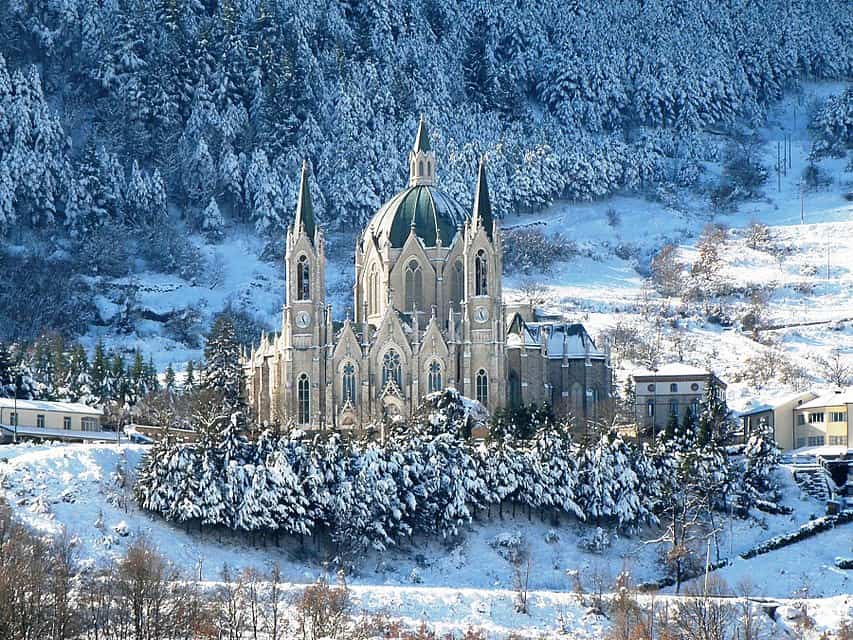
Molise arrival
We left Rome in Marina’s new Fiat Panda I bought her for Christmas (I’m not a cheap boyfriend) on a cool overcast morning in the mid-40s. We headed southeast, dipping into northern Campania before heading east into the green, mountainous countryside of Molise.
The region is 55 percent mountains and seemingly 40 percent more farmland. In fact, Marina had to buy snow chains as all cars are required to carry them in Molise until April 15. The morning fog descended like a feathered blanket over the tops of tall green hills. We saw bufala mozzarella stands on the side of roads lined with trees still bare from the winter.
Near the village of Castelpetroso, we passed the beautiful blue-domed church, Basilica Minore dell’Addolorata, with its twin spires, looking like a Disneyland castle in the middle of a forest. Radio stations faded in and out until we finally just turned it off. I remember doing the same once driving through the Mojave Desert.

It took us 3½ hours to travel the 120 miles (193 kilometers) to Campobasso, Molise’s pleasant capital. I’ve heard Romans say that by Italian standards, Campobasso ranks down there with boxed wine. However, not many Italians have ever visited. By American standards, Campobasso is like a fine Tintilia, a Molisano red I discovered here. Located 40 miles (69 kilometers) inland, the city of 50,000 is spread over a valley with a small old town laid out over narrow, cobblestone alleys.
Piazza Vittorio Emanuele II is a tranquil, tree-lined space covering an entire block with a nice fountain and anchored by Palazzo San Giorgio, the city’s giant, beige municipal palace. It’s nearly adjacent to Piazza Gabriele Pepe. He was a Molisano soldier who fought against the French for the Neapolitan Republic in 1799 and famously dueled and injured the French poet Alphonse de Lamartine who compared Italians to “human dust.”
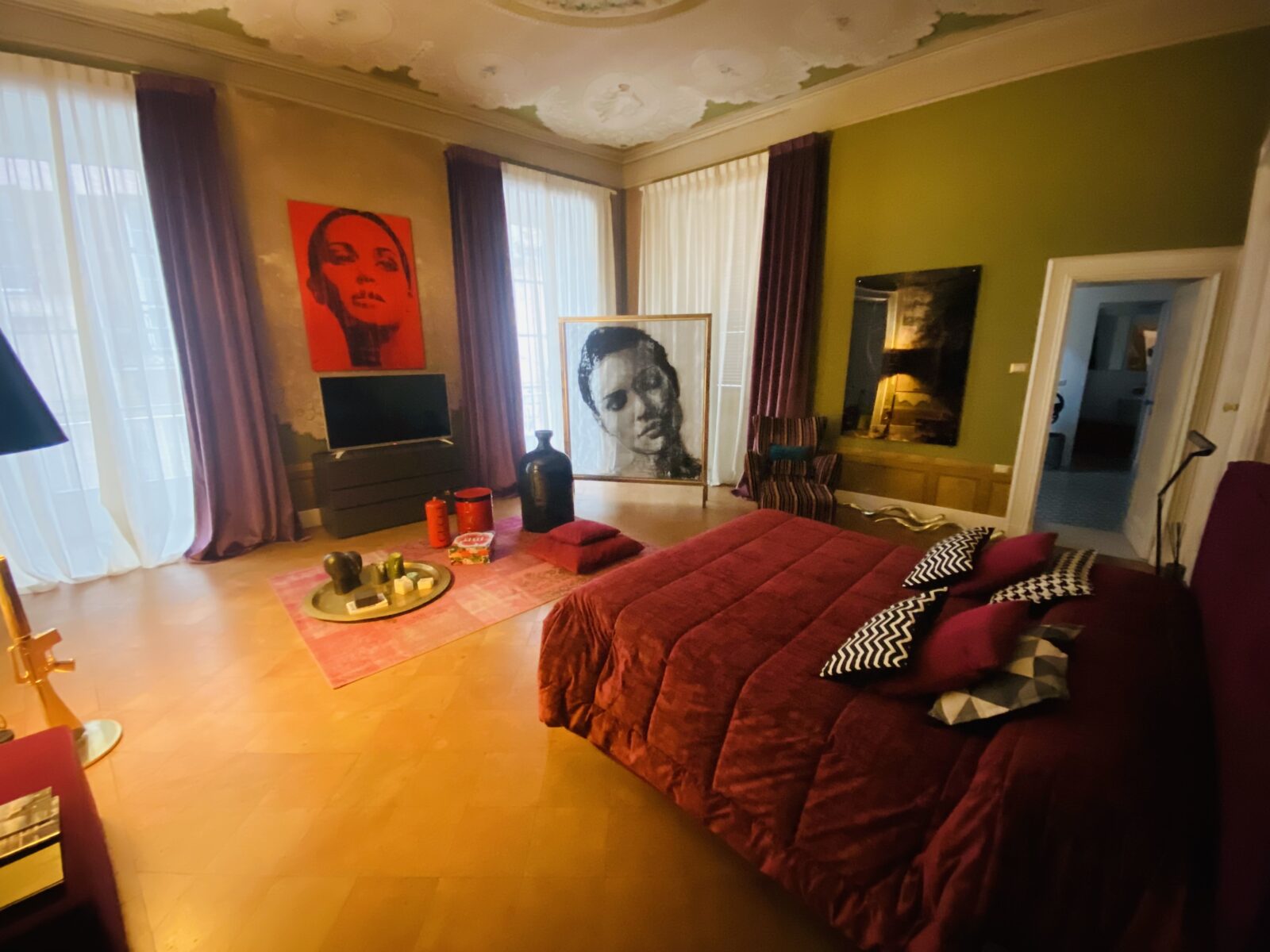
The hotel
Our accommodation was something out of “Hotels of the Rich and Weird.” Palazzo Cannavina is in a 500-year-old palace on a side street leading into Piazza Gabriele Pepe. A huge open-air courtyard led to stairs up to the second-floor hotel. Palazzo Cannavina consists of only six suites, and our Suite Cannavina spoiled us the minute we walked in.
It’s 50 square meters (540 square feet), nearly as big as my apartment in Rome, with a balcony overlooking charming Via Cannavina and a small terrace with a table and two chairs.

But it wasn’t the size that globsmocked me. In a country with 75 percent of the world’s art, this suite’s art stood out. On the ceiling was a 19th century fresco and scattered around the room were a grab bag of modern art: two giant portraits of a pretty Italian woman with short hair, brightly painted fire extinguishers, a copper tray with candles and two black, bulbous shapes that confused me but somehow fit in context.
The hotel is littered with strange, brightly colored artwork. There are fire extinguishers with the logos of Yves Saint Laurent, Chanel and Versace, fiery red skulls, a life-sized black horse with a lamp sticking out of its head.
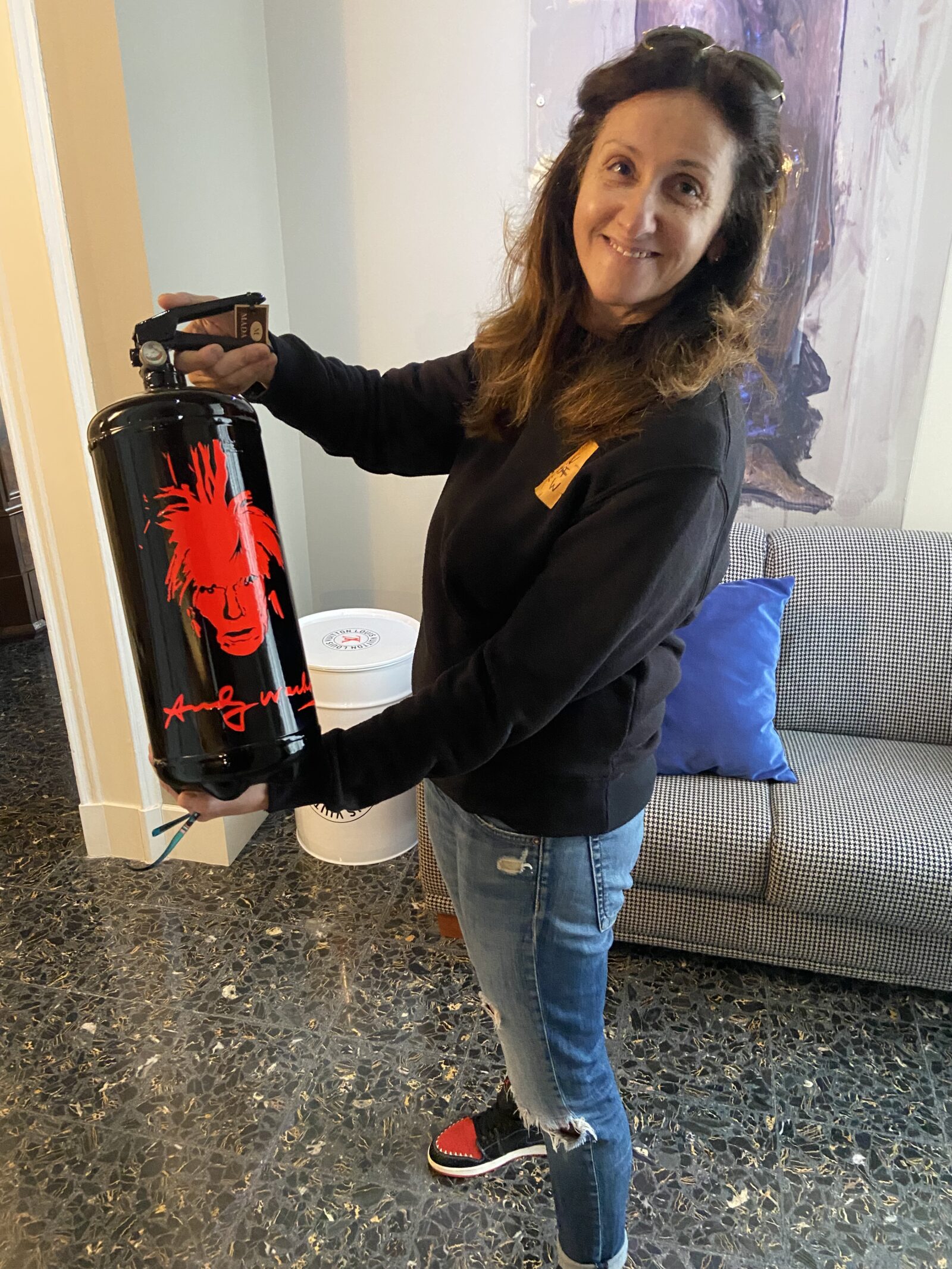
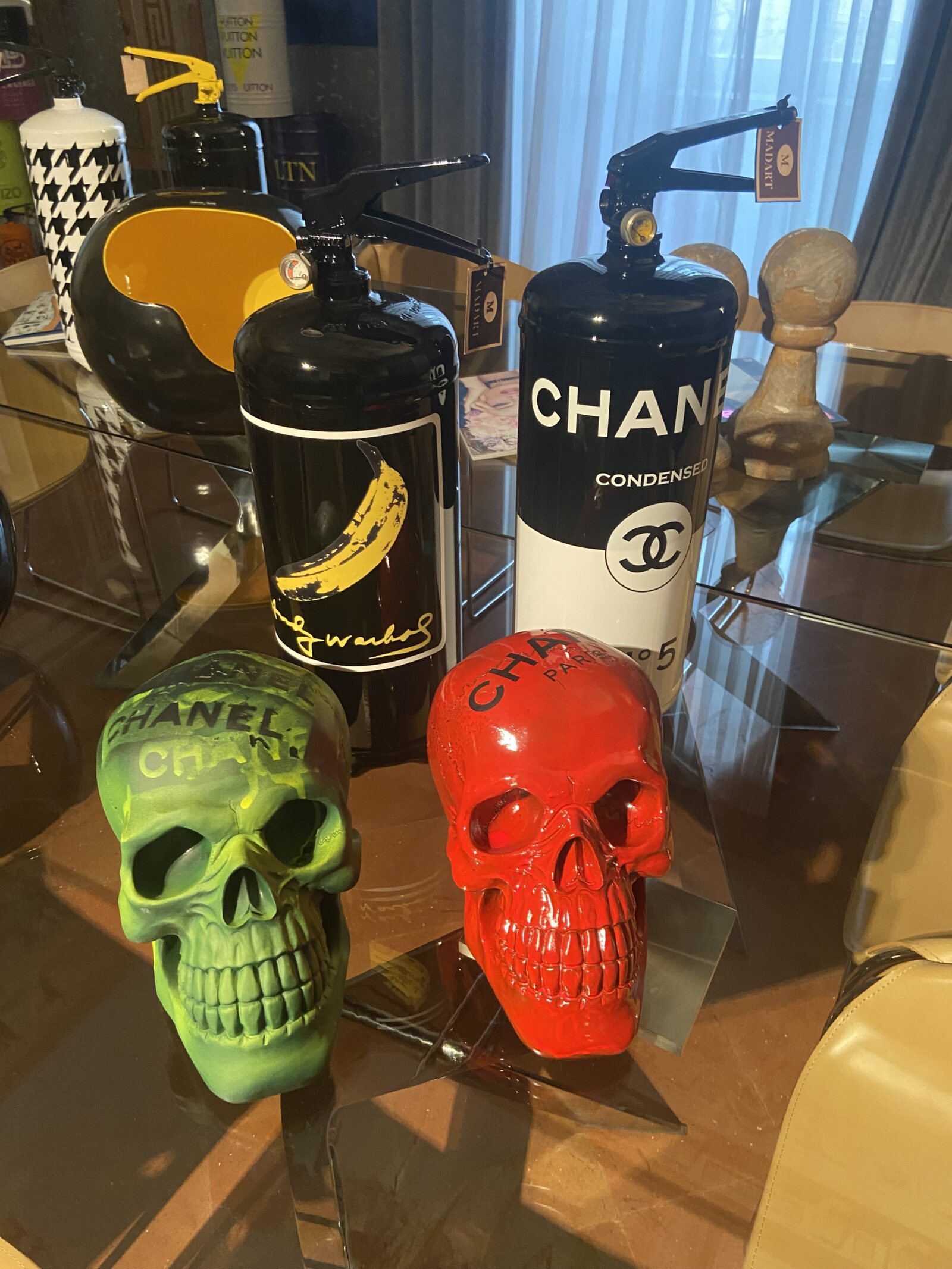
The design is the work of hotel owner Manuela Carusi, an artist inspired by Andy Warhol. She even has the late eccentric artist emblazoned on one of her extinguishers. I don’t like Warhol who was more media icon than substance. I enjoyed Manuela’s fire extinguishers more than his Campbell’s Soup Can which is just as ugly as a Campbell’s soup can. But Manuela’s mix of old and new really worked for me.
She said she did much of it during Italy’s lockdowns.
“The palace is ancient, and I like the two styles: modern design and the history,” she said. “It inspires me.”
Combined with the modern, spacious bathroom and the elegant breakfast setting and great cappuccino, the experience was a true birthday present to myself. Through 109 countries, 47 U.S. states and 18 Italian regions, it may have been the nicest room I’ve ever stayed in.
However, as Marina said, “You don’t come to Molise for the cities. You come for the countryside.”
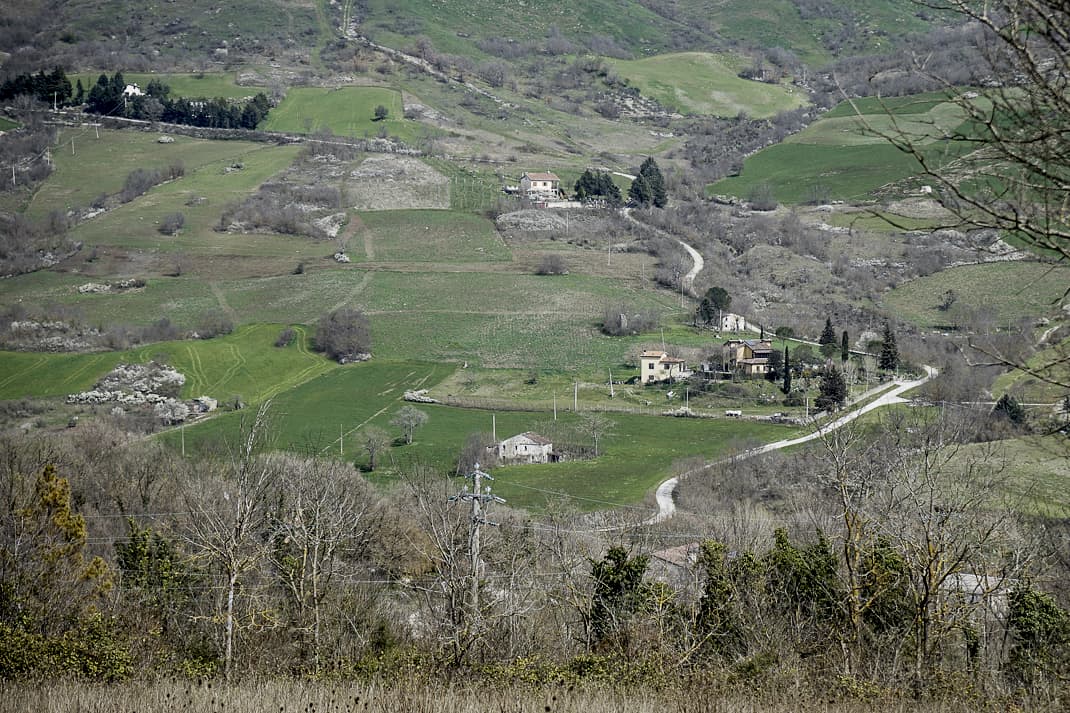
The Tratturi
I packed hiking gear to hike the Tratturi. These are ancient paths shepherds have used to migrate their sheep in spring. They cover 1,860 miles (3,100 kilometers) over six regions in Central and Southern Italy. They’ve been around since pre-Roman times when the Sammites, an ancient people who date back in this area to 600 B.C., used the trails to migrate their livestock.
The trails are still here and can often be seen as little white lines criss crossing up and down hills and across valleys. Since 2006 the Tratturi have been a candidate for the UNESCO World Heritage List. We wanted to see photos of Molise’s Kodak shot: of lone men engulfed by a giant herd of sheep without a road in sight.
Instead we barely got out of the car.
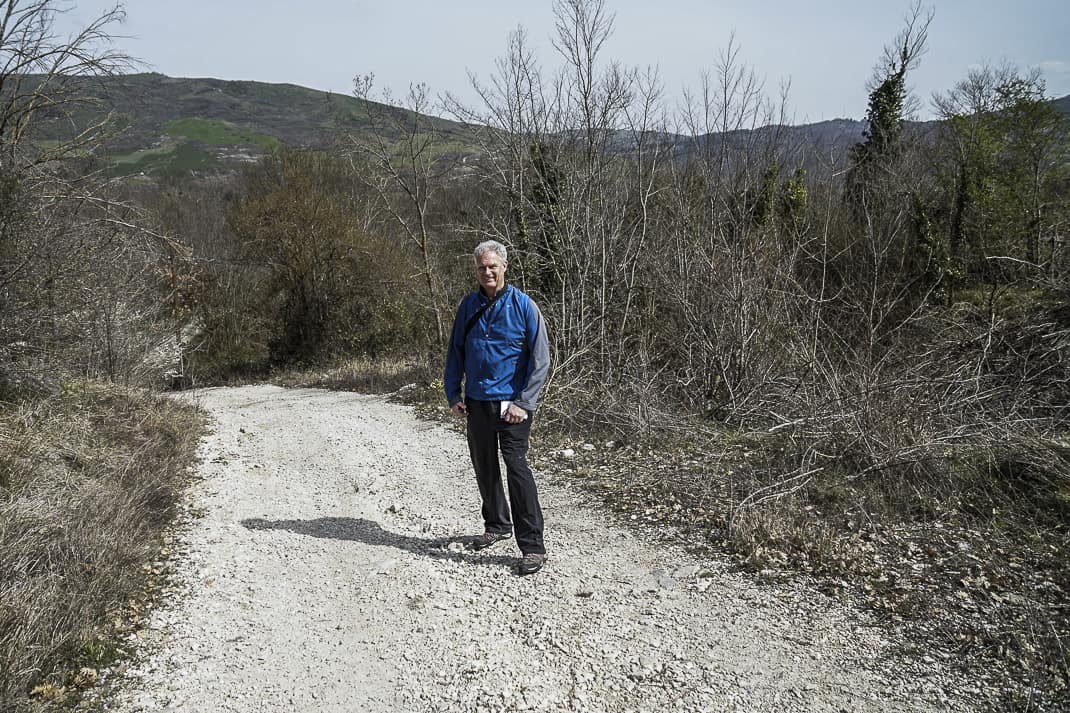
The downside of an Italian region off the beaten path is you get little help. We went to Molise’s regional tourist office near the hotel. It was no bigger than a closet. The sign said it opened at 9 a.m. We arrived at 10.
It was pitch black. Closed.
Luca, the kind, conscientious hotel manager, said it didn’t matter. A proper map of the Tratturi doesn’t exist here. However, he has hiked them and gave us some directions.
After a miscommunication that left us in the parking lot of a Campobasso auto mechanic shop, we headed into the hills northeast of town looking for a sign reading Casello 69, the start of a Tratturo trail. We passed huge white windmills, slowly turning in generating natural energy for a region dedicated to green energy and is dotted with wind farms.
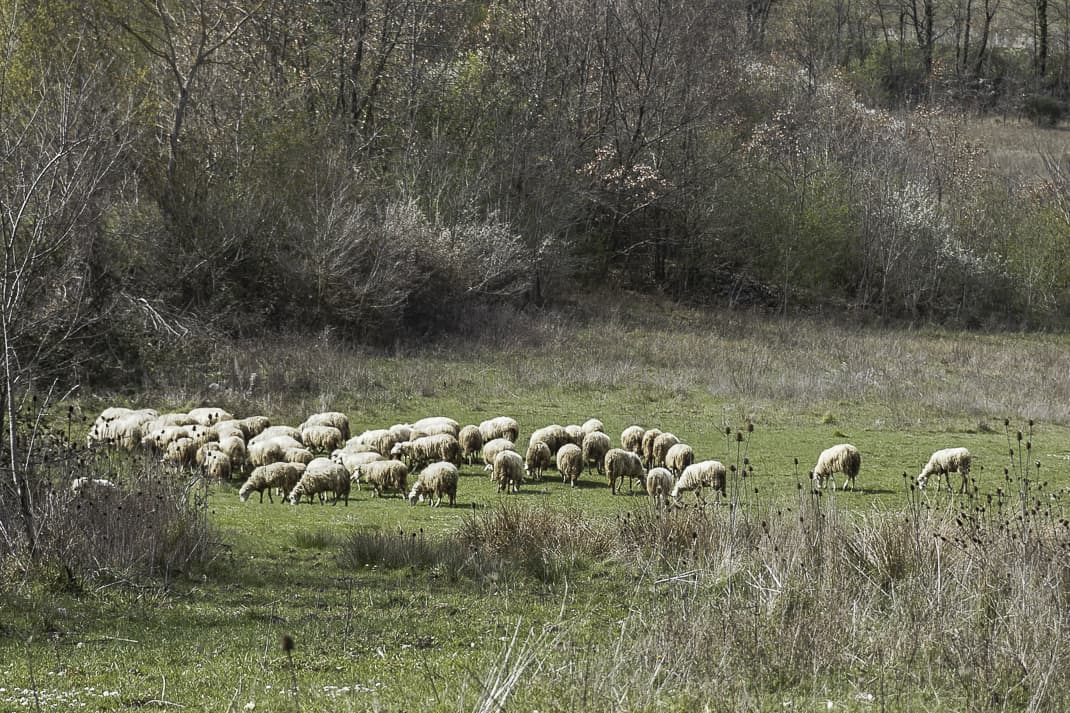
We followed the narrow, windy road to the village of Campolieto where the Taverna del Tratturo would surely point us to the trailhead. Certainly, I thought. After all, how did the taverna get its name?
We walked in and asked the young woman behind the cash register where the trailhead is.
“Where is Casello 69?”
“The what?”
“The trail. The Tratturi?”
“The what?”
She’d never heard of it. She had no idea what we were talking about.

Shaking our heads, we drove down the road where we found an elderly couple outside their nice home. Francesco Zapone has lived here for all of his 85 years. He told us he has a daughter and three nephews in New York. (I think every Italian has a daughter and three nephews in New York.) He also told us Casello 69 was just across the road.
We crossed and found a narrow trail cutting through tall grass. It wasn’t wide enough for Marina’s thin figure, let alone a herd of sheep. After about 50 feet, I was up to my ankle in swampy grass. Up ahead was a thicket I needed a machete to penetrate.
Slowly getting frustrated, I called Luca again and he directed us to Montagano, to the northwest about seven miles. It’s a pleasant little village with beautiful views of the valley below. All we needed was a trailhead. Luca said go to the edge of town and you’ll find one.

We found nothing but containment walls. Locals knew nothing. We could’ve asked directions to their local space station. It isn’t surprising. Italians love outdoors but hiking through wilderness carrying lunch on your back is not in their realm of consideration compared to sitting next to a sun-splashed vineyard with plates of homemade pasta and bottles of wine.
As we drove off, I muttered, “Italians couldn’t promote a live sex act.” Marina told me to trust her intuition. Soon, sure enough, we saw a crude sign reading, “I TRATTURI.” We went in that direction and yes! Finally, we found a trailhead, with a trail similar to the white lines we saw zigzagging in the distance.
We started hiking past big piles of wood and a thick forest. After only 10 minutes, a man emerged from the woods, like a bored cop with a Napoleon complex. He dropped the sweet, rural disposition we’d become used to in Molise and asked what we were doing.
Standing there with a backpack and hiking clothes, I resisted the urge to say, “We’re alien invaders and want to capture your children. What the hell does it look like we’re doing?” Marina, politely, said we were hiking the Tratturi. He said this isn’t the Tratturi. He doesn’t know where the Tratturi is. This is a private road. Then he mumbled something in the Molisano dialect that I’m glad Marina and I didn’t understand.
We returned and did see a man and his two dogs shepherding a herd of sheep in a field. That was our lone highlight as it went downhill from there. We crossed the road and saw the same trail. Hmm. This might be it. We hiked downhill past a modern house where firewood was stored in a storage area. We could see the vast countryside laid out below, like a patchwork quilt you’d find in a country inn.

After 15 minutes, however, we ran into the road. Across it we saw no path, nothing that connected with the zigzagging lines in the distance. We hiked back, ending a day of hiking that consisted of only 30 minutes and maybe about 300 yards.
“I need wine,” I said.
Marina, usually the model of patience (it’s part of an Italian’s DNA), was about to lose it, too.
“Tunisia is more organized,” she said. “Cuba is more organized. Laos is better.”
We did salvage the afternoon. You can do that in Molise. Just get in your car and drive. Anywhere. We headed back to Campobasso and along the way stopped at one of the countless tiny hilltowns sprinkled around the countryside.
Oratino is a sleepy little town of 1,300 people with a small square boasting one of the most spectacular panoramic views in Molise. Two Brazilian men, about the only tourists we saw in Molise over three days, marveled at the view below. Two old men sat on benches in the square lined with fir and pine trees. A pretty fountain stood in the middle.
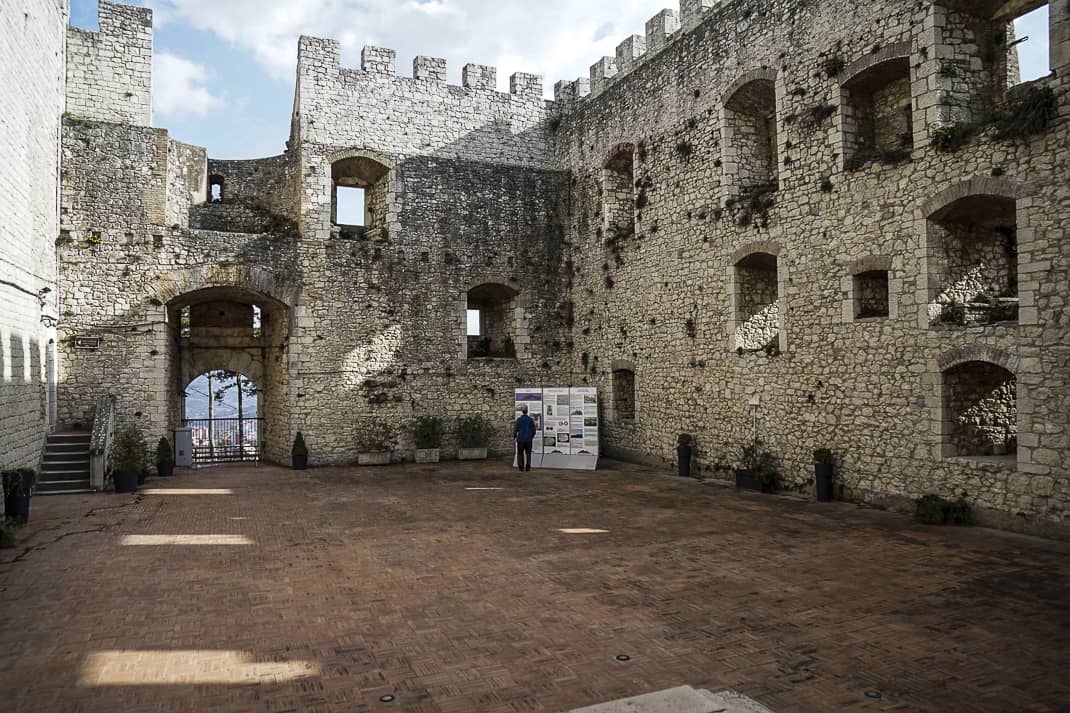
Our moods less violent, we stopped on the outskirts of Campobasso and drove up the windy road to Castello Monforte, a 15th century castle with a big stone bell tower. The display photos convinced me we must come back at night in the snow when it bathes in floodlights.
It’s next to Chiesa di San Giorgio Marino, an 11th century church which represented Molise art at Expo 2015.
All the bars in Oratino were closed in the afternoon. I hadn’t had my wine fix. Campobasso and the bright red skull beckoned.

The food
The best thing about living in Italy is no matter how angry you get with the lack of organization, how lonely you get with no family, how frustrated you get with the language, you always have dinner to look forward to.
Being more than half mountainous and colder than most Southern Italian regions, Molise’s cuisine is hearty: Thick pasta noodles, farm meat like lamb and goat, soups, smoked prosciutto and caciocavallo, the big round cheese balls that hang from delis’ ceilings.
Our first night we went to Osteria28, a charming place in a cave-like building built in 800 A.D. I had their specialty dish, tagliatelle con pistaccio, guanciale e pomodori secchi (long, wide flat pasta with pistachio crumbs, pig’s cheek and sun-dried tomatoes.) It was so good I copied the recipe to try at home.
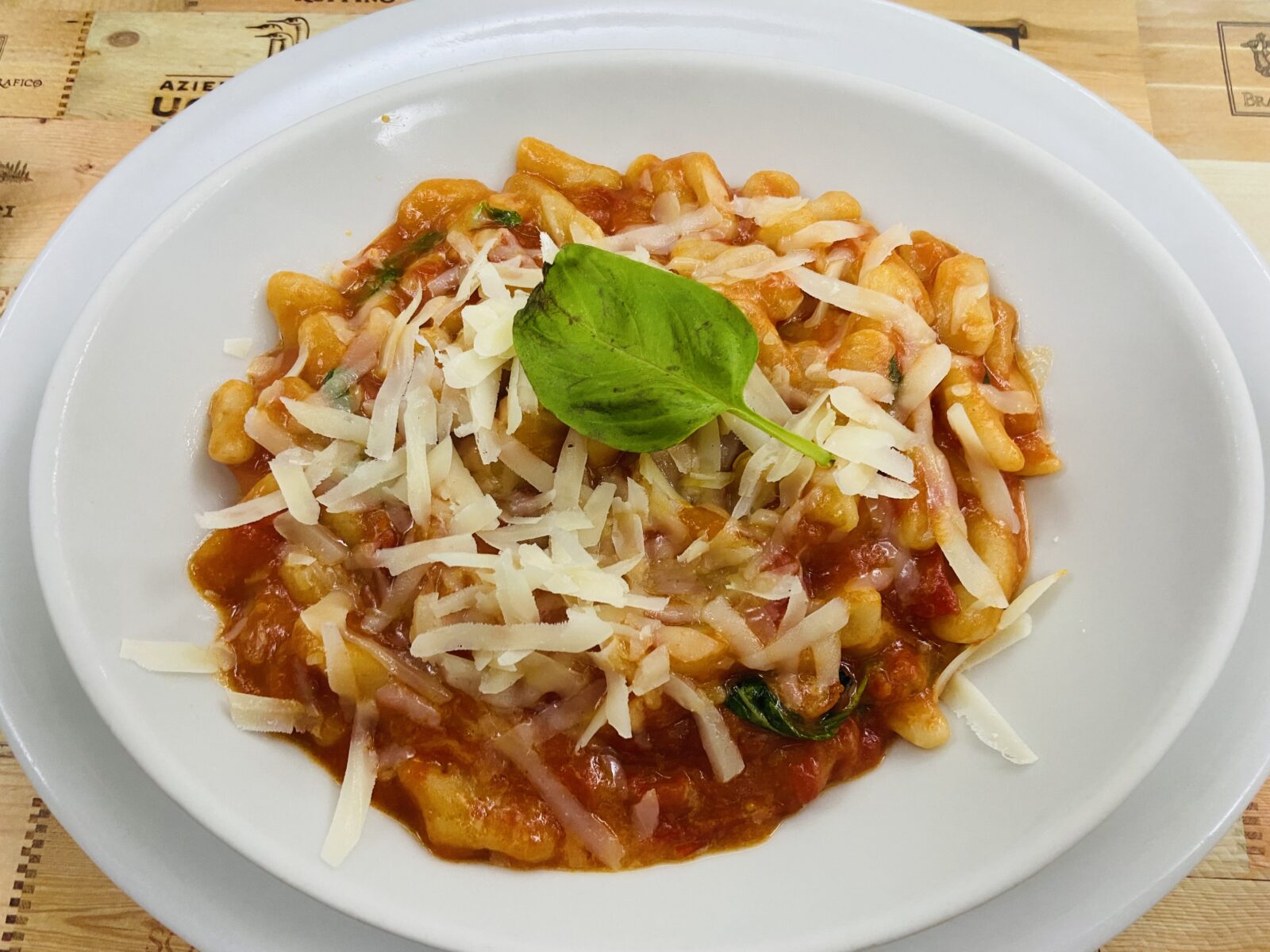
For my birthday the next night, we took the hotel’s recommendation and went to Aciniello, a plain, simple restaurant with only eight tables and a short menu. I had the cavatelli con ragu di caciocavallo e pomodori (small, short pasta that look like squeezed ears with caciocavallo cheese and tomatoes). Again, another new pasta dish I’ve never tried and will always do again.
On our last day touring villages, we stopped off at La Taverna dei Sanniti, a big, elegant restaurant on the outskirts of Pietrabbondante, with a population of all of 740 people. Dino Di Iorio, the owner, greeted us like long-last family members. He had no menu. He just told us what he had that day.
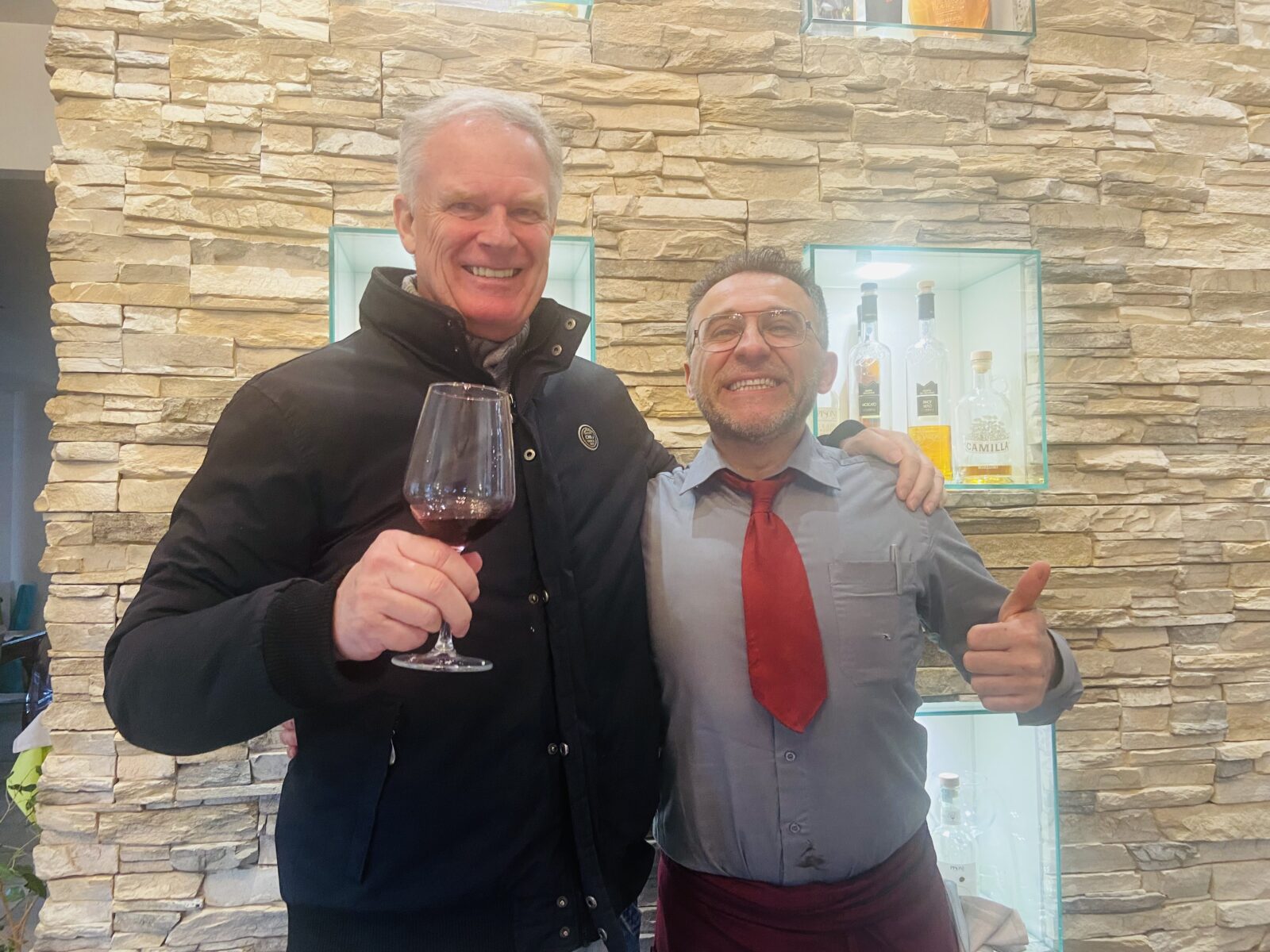
We ate like royalty for peanuts, a common theme in Molise. We had appetizers of fried caciocavallo and local prosciutto and I had the tacconelli ragu (wide, triangle-shaped pasta with big hunks of meat in a rich meat sauce). For two appetizers, two main dishes, a half-liter of local Montepulciano wine, coffee and a local Centerbe liqueur on the house I paid all of 27 euros.
Despite its size, Molise has its own wine scene. I fell hard for Tintilia, their local pride and joy, a rich ruby red wine high in alcohol but also in flavors such as (from my wine guide) plums and sour cherries. I also enjoyed the Petriera Rosato. I don’t like rose wine much but this one had a late-flavor kick of wild cherries that even had Marina tempted to take a rare second glass.
Another birthday gone. Another year toward the end. But when in Italy, you never feel old. And when in Molise, you never feel crowded.

If you would like to go …
How to get there: About a dozen trains a day leave from Roma’s Termini station to Campobasso. The 3 ½-hour trip, with a change at Rocco Ravindola, starts at 16.05 euros. It’s better to rent a car. The journey without stops is 2 hours, 45 minutes.
Where to stay: Palazzo Cannavina, Via V. Cannavina 24, 39-393-482-0000, Hotel B&B Campobasso – Palazzo Cannavina, info@palazzocannavina.com. Six beautifully decorated suites in the old town. I paid 120 euros a night for the Suite Cannavina.
Where to eat: Osteria28, Via De Attellis 9, 39-08-74-195-7381/39-333-942-7699, Home | Ristorante Osteria28 | Campobasso, info@palazzocannavina.com, noon-2:30 p.m., 7-10:30 p.m. Monday-Friday, 7-10:30 p.m. Saturday. Local dishes such as cavatelli pasta and fettuccine di grano arso, also local steaks, from 8-15 euros.
Aciniello, Via Torino 4, 39-328-558-5489/39-0874-94001, Home | Ristorante Osteria28 | Campobasso, rdc73@libero.it, 11 a.m.-10:30 p.m., Monday-Saturday. Molisano dishes ranging from 7-15 euros.
When to go: At 700 meters (2,300 feet), Campobasso is cool all year round. July and August have lows of 64 to high of 80. January is coldest at 35-44. Our visit in late March had temps between low 40s and mid-50s. Molise gets little rain and few tourists year round.
For more information: Infopoint Turistico Molise, Piazzetta Palombo, 39-389-953-3644.


April 5, 2022 @ 12:46 pm
Only 3 1/2 hours from Rome, it’s amazing you hadn’t sought out the Tratturi before. But what a find is Molise!
April 6, 2022 @ 3:22 am
John, belated Buon Compleanno and many more ! Really enjoy your sense of humor and adventure. Write on 🙂
April 6, 2022 @ 7:55 am
Happy birthday! I have learned never to ask an Italian for information. They generally know nothing about their own area. We have just visited Perugia, a rotten place to get into. The city centre is lovely but I don’t think I could go through what we did to get there again.
We have found Puglia to be the most confusing place. The roads are terrible, the drivers the worst in Italy and sign directions useless.
But…I forgive Italy for all its confusion because it is simply beautiful.
April 8, 2022 @ 9:01 am
A belated Buon Compleanno and this was a good one! Would have liked to see the car though…
April 11, 2022 @ 5:12 am
Really enjoyed your article, it was spot on. I have lived in Molise since 1994 (moved here from Dallas, Texas with my daughter after the death of husband, his family is from Gildone a small town 15 minutes from Campobasso). Happy belated birthday.
February 29, 2024 @ 1:16 am
As I’m preparing our month long visit to Italy, and especially the less touristic Molise in March, I was very happy to find your article and smiled while reading it 🙂 I hope that map apps will allow us to find nice hiking trails (Tratturi) easily… We’ll see.
February 29, 2024 @ 8:57 am
Thanks! Yes, good luck with the maps. I’d contact the tourist office — if they’re ever open — and ask if they have maps. And try to ask in Italian. I imagine they don’t speak English. And as I wrote, the locals have no idea where the trails are. As a last resort, just go and ask the shepherds or follow the sheep.